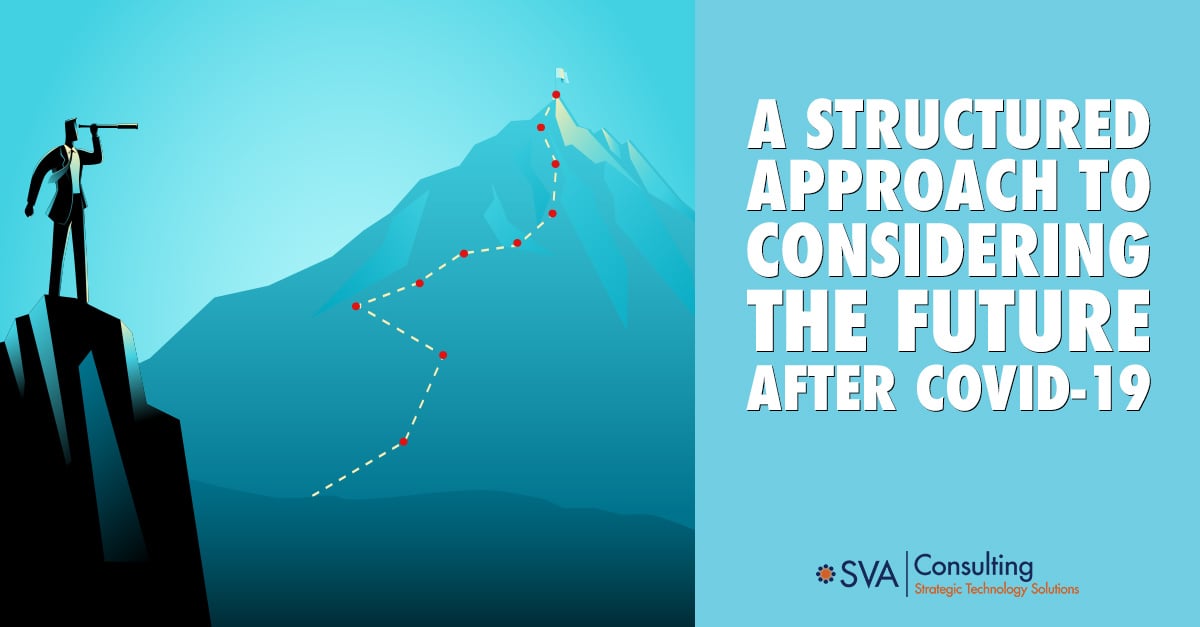





Discover the valuable insights our consultants provide. Subscribe to our Insights blog to receive email alerts whenever we post something new!


Published on: Apr 17, 2020 4:57:58 PM by Dr. Bryan Bechtoldt, EdD
Updated on: March 20, 2025
In an attempt to prepare myself for leadership in a post-COVID-19 world, I embarked on an educational journey to increase my knowledge in areas I determined needed advancement. My learning plan specifically focused on three action steps:
I started with the study of futurism.
I searched the internet for programs in futurism to find a structured plan to study what was a new topic for me. I decided to invest in the program at The Futurist Institute. The Futurist Institute was founded by Jason Schenker with a purpose to educate people on how to consider the future. Mr. Schenker’s work is the primary source of my learning on the topic of futurism. Mr. Schenker’s framing of what a futurist is, he captured in a phrase he repeats several times throughout the program:
“Futurism is looking through the lens of the past while analyzing the data of the present to make a forecast of the future.” In essence, this saying summarizes what the mindset is to be a futurist.
Futurism is a multi-disciplinary approach to performing long-range analysis and forecasting. Three disciplines serve as core elements to the futurist’s analytic frame: history, economics, and technology.
History provides the most available data to analyze. Generally, the notion is that seldom do things occur for the first time. Looking back at history gives us an ability to see how humans have reacted to similar changes in time, in an attempt to understand how humans are likely to respond in the future.
Economic data is widely available from open sources and can provide insight, trends, and even predictive guidance to what is happening in the relative present.
Technology is developing rapidly and fueling the disruption of almost all industries. When looking at technology, it is essential to look at what technologies are currently available, as well as what technologies are emerging into minimally viable products (MVP). Focusing on MVP technologies will keep your analysis on what will impact the predictable future. It will keep you away from losing credibility by forecasting things in the science fiction realm.
Using these inputs, you can then apply your lens to a particular industry or topic and perform your analysis. The sectors or topics covered in the Futurist Institute program I studied were:
Note: The Futurist Institute provides a certification program for becoming a Futurist and Long-Term Analyst™ or FLTA™. To achieve this certification, you must take all of the courses offered by the Institute, pass a quiz for each class, and take a final exam containing 90 questions. I completed this course work and received the certification in about two weeks.
Each of the three core elements involved in the futurist’s analytic lens performs a unique function in the process. These unique functions create perspectives to consider as data inputs for the analysis. These data inputs are both qualitative and quantitative and would be traditionally considered a mixed-methods approach to research. In Mr. Schenker’s work, the qualitative data is weighted heavily in the analytic process. Importantly, there is an emphasis on the communication of the outputs of the process. This communication focus is critical, to the mission of the futurist is to educate on what the future holds. To this end, the futurist - the one doing the analysis - practices the art of storytelling to frame findings in such a way that the audience can rapidly and easily interpret them. This story is what makes up the “forecast.”
Long term forecasting and the work of the futurist is becoming critical to society, as the speed of innovation is accelerating increasingly and rapidly, shortening the time the world has to adjust to advancements. When we mistime the adjustment window and wait too long to react to the movements of the future, we run the risk of being disrupted or worse. Long-term analysis and futurism provide the promise of allowing society and organizations to be proactive and strategic in anticipating change, rather than being reactive or becoming a victim of change. Futurism is about being in control of your direction, being in a position to make purposeful adjustments, and not being at the whim of rapid advancements.
I am curious to begin to apply what I have learned at the Futurist Institute. It will take a tremendous amount of time to achieve the level of mastery of the discipline displayed by Mr. Schenker. However, with an excellent base understanding of how the core elements of history, economics, and technology foreshadow the direction of the world, I feel that I am well-equipped to start considering the future in a structured manner that can yield positive and repeatable results.
© 2020 SVA ConsultingShare this post:

Bryan is the President and Principal for SVA Consulting, LLC, a member of the SVA family of companies. In his role, Bryan works with SVA’s clients to help them prepare their organization for transformation through shaping vision and development of implementation strategies.







contact@svaconsulting.com

(800) 366-9091

1221 John Q Hammons Dr., Suite 201, Madison, WI 53717

18650 W. Corporate Dr., Suite 205, Brookfield, WI 53045

1600 Utica Ave S, 9th Floor,
Saint Louis Park, MN 55416

7135 E. Camelback Road, 230, Scottsdale, AZ 85251

109 West Commercial Street, Suite 107, Sanford, FL 32771
©2026 SVA Consulting, LLC. All Rights Reserved. | Privacy Policy | Cookie Policy | CCPA
